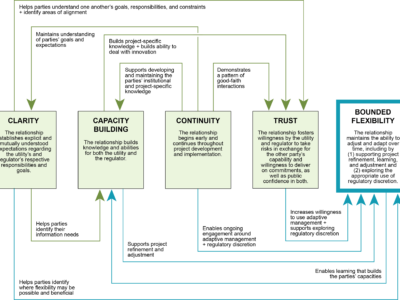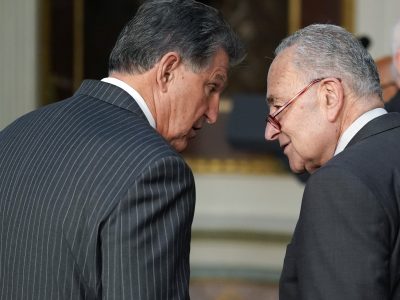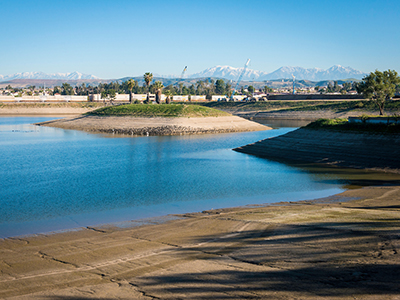permitting
Modernizing Air Permitting in California
Guest Contributor Craig Segall writes that SB 318 would help clean up factories and other big industrial sources by pulling permitting practices into this century.
Almost every major industrial and power facility in California needs an air permit when it’s built or renovated. That’s a huge opportunity to rapidly advance the zero and near-zero technologies that Congress invested in in the Inflation Reduction Act, and that we urgently need to meet ever-more-pressing air quality challenges, especially as attacks from the …
Continue reading “Modernizing Air Permitting in California”
CONTINUE READINGTrump’s Discordant Coal Quartet
Yesterday’s four executive orders were long on talk and short on action.
Yesterday, flanked by a coal miners in hard hats, Trump signed four executive orders to restore their industry to its past glory. Given that coal is now the most expensive way to generate power other than nuclear, that’s going to be a heavy lift. Like many of Trump’s orders, these four are full of threats and bluster, but will have little immediate effect. These orders give the same impression as many executive orders — that Something Important is Being Done — but they are really more in the way of promises of future action.
CONTINUE READINGThe role of regulatory relationships in wastewater innovation
by Nell Green Nylen, Michael Kiparsky, and Anita Milman
Public water and wastewater utilities are increasingly struggling to meet society’s expectations. Their basic infrastructure is aging, budgets are tight, and they face a barrage of stressors, from population growth to climate change and shifting regulatory expectations. What’s more, in addition to performing their traditional function of protecting human health and water quality, many wastewater …
Continue reading “The role of regulatory relationships in wastewater innovation”
CONTINUE READINGNew York’s New Environmental Justice Law
Unless amended or carefully implemented, there’s a risk the law could hurt the communities it’s meant to serve.
New York has enacted what may be the country’s most stringent environmental justice law. The state deserves credit for its commitment to remedying the unfair pollution burdens placed on disadvantaged communities. The law is so broadly worded, however, that it may have the potential to prevent economic development that would aid those communities, or even …
Continue reading “New York’s New Environmental Justice Law”
CONTINUE READINGThe Side Deal
How would the Manchin-Schumer deal on permitting impact the environment?
To get Manchin’s vote for the $379 billion in environmental spending in the IRA bill, Schumer and other congressional leaders had to agree to support Manchin’s efforts to speed up the permit system. At this point, all we have is a one-page list of permitting changes that would form the basis of a new bill. …
Continue reading “The Side Deal”
CONTINUE READINGAn Abundance Research Agenda
If we need to build lots of things fast to address climate and housing crises, how will we do that?
There’s been a lot of buzz about this column by Ezra Klein in the New York Times. Klein’s basic argument: We need to do a lot of infrastructure and other development projects to make the world a better place. For example, we’ll need to build power lines and renewable projects to address climate change. But …
Continue reading “An Abundance Research Agenda”
CONTINUE READINGWater right permitting options for groundwater recharge: Avoiding unintended consequences
by Kate Fritz and Nell Green Nylen
Efforts to boost groundwater recharge are critical to making California’s limited, and increasingly volatile, water resources go further. Recharge is playing a growing role in maintaining groundwater as an effective drought reserve and in slowing or reversing the effects of years of unsustainable groundwater pumping. But implementing recharge projects is not easy. Water managers face …
CONTINUE READINGHouse Subcommittee Considering Clean Air Act Amendments to Weaken Bedrock of Stationary Source Permitting
Proposed changes to NSR could have significant impact on EJ communities
The House Energy and Commerce Subcommittee on Environment is currently considering amendments designed to weaken the New Source Review permitting program. The GOP proposal has been floating around since a discussion draft was released in May based on a bill introduced last year by Rep. Morgan Griffith (R-Va.), but seems to have flown under the radar until …
CONTINUE READINGGeneral Permits and the Regulation of Greenhouse Gases
The Supreme Court ignored a major option for effective regulation
Author’s Note: The following post is co-authored by Eric Biber and J.B. Ruhl, the David Daniels Allen Distinguished Chair of Law and the Co-Director of the Energy, Environment, and Land Use Program at Vanderbilt Law School. It is also cross-posted at Reg Blog. Reg Blog, supported by the U Penn Program on Regulation is an …
Continue reading “General Permits and the Regulation of Greenhouse Gases”
CONTINUE READINGIs EPA backtracking on Clean Air Act greenhouse gas regulation?
UPDATE: Cara discusses in this post some further developments that make the EPA’s plans more concrete, and concludes that the EPA is backtracking significantly from its proposed rule by delaying the timetable and by regulating fewer facilities. **** Last fall, our Environmental Protection Agency appeared to be on the verge of moving very quickly to …
Continue reading “Is EPA backtracking on Clean Air Act greenhouse gas regulation?”
CONTINUE READING










